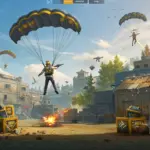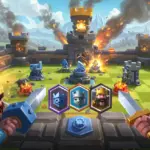Free Fire: Master New Map Updates & Dominate the Game
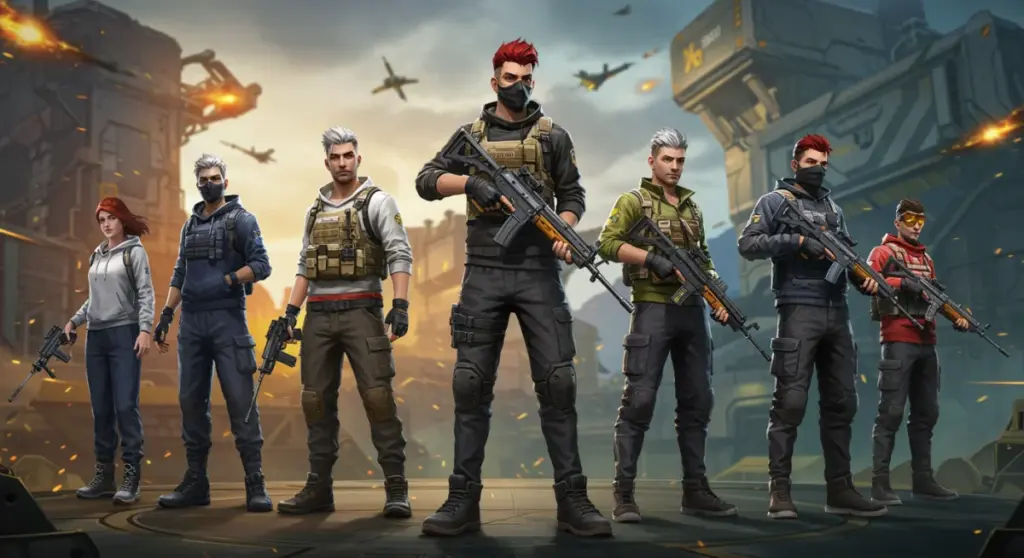
Anúncios
Mastering the dynamic landscape of Free Fire Map Updates is crucial for any player aiming for consistent victory, requiring adaptation to new terrains, strategic locations, and evolving combat scenarios.
Are you ready to elevate your Free Fire gameplay and conquer every battleground? The world of Free Fire is constantly evolving, with new map updates frequently introducing fresh challenges and opportunities. To truly master the game, understanding and adapting to these changes is not just an advantage—it’s a necessity. This comprehensive guide, Free Fire: The Ultimate Guide to Mastering the Newest Map Updates, will equip you with the knowledge and strategies needed to navigate the ever-changing landscapes, outsmart your opponents, and secure that coveted Booyah!
Understanding the Impact of Map Updates on Free Fire Gameplay
Free Fire map updates are more than just cosmetic changes; they fundamentally alter the flow of gameplay, player movement, and strategic engagements. Each update brings new terrain, revised loot distributions, and often, fresh points of interest that become hot zones for early-game skirmishes. Players who quickly grasp these modifications gain a significant edge over those who rely on outdated strategies.
Adapting to these changes requires a flexible mindset and a willingness to experiment. What worked perfectly on the old version of a map might lead to early elimination on the new one. This section delves into how these updates influence core gameplay mechanics and what players need to consider when dropping into unfamiliar territory.
The Evolving Landscape of Battle Royale
- New Cover Opportunities: Updated maps often introduce new structures, rock formations, or dense vegetation that provide fresh cover for engagements or rotations.
- Revised Loot Zones: The distribution of high-tier loot can shift dramatically, influencing drop strategies and early-game engagements.
- Strategic Chokepoints: New topographical features can create or eliminate chokepoints, altering how teams traverse the map and where confrontations are likely to occur.
- Verticality Changes: Some updates add multi-level structures or elevated positions, introducing new vertical combat dynamics.
Successfully navigating these changes means consistently analyzing the map, identifying new safe zones, dangerous areas, and optimal rotation paths. It’s about being proactive, not reactive, in a fast-paced environment. Players must learn to identify patterns in the new landscape and exploit them to their advantage, turning potential chaos into calculated opportunities.
In conclusion, map updates are a core part of the Free Fire experience, designed to keep the game fresh and challenging. Understanding their deep impact on gameplay is the first step towards mastering them, allowing players to refine their strategies and maintain a competitive edge.
Analyzing Recent Map Changes: Bermuda Remastered and Purgatory 2.0
Garena consistently refines its battlegrounds, with significant updates to maps like Bermuda Remastered and Purgatory 2.0 having a profound effect on player strategies. These updates weren’t just minor tweaks; they introduced entirely new zones, redesigned existing landmarks, and altered the overall tactical approach required for victory. Understanding the specifics of these changes is paramount for any serious Free Fire player.
This section will break down the most impactful modifications, offering insights into how these areas have evolved and what that means for your gameplay. We’ll explore the new combat dynamics and strategic considerations that arise from these revamped environments.
Bermuda Remastered: A Fresh Perspective
Bermuda Remastered brought several new locations, each with unique characteristics that demand different tactical approaches. For instance, the addition of the Peak area transformed a once open field into a multi-level combat zone, favoring players with good vertical awareness and precise aim. Similarly, the revitalized Factory now offers more intricate interior spaces, promoting close-quarters combat over long-range engagements.
Players must re-evaluate their drop points and rotation strategies. High-tier loot distribution might have shifted to these new areas, making them prime targets for early-game contests. Understanding the flow of combat in these zones is crucial.
Purgatory 2.0: Navigating the Expanded Frontier
Purgatory 2.0, on the other hand, expanded the map significantly, introducing more diverse terrain and a greater emphasis on vehicle usage for quicker rotations. New areas like the Quarry and the Central have become popular spots, each presenting unique challenges. The Quarry, with its open spaces and limited cover, often leads to intense mid-range gunfights, while the Central combines open areas with scattered buildings, requiring a hybrid approach.
The expanded size also means that zone awareness becomes even more critical. Players need to plan their movements carefully to avoid getting caught outside the safe zone, especially during later stages of the game. Learning the fastest routes and understanding where opposition is likely to converge are key skills for this map.
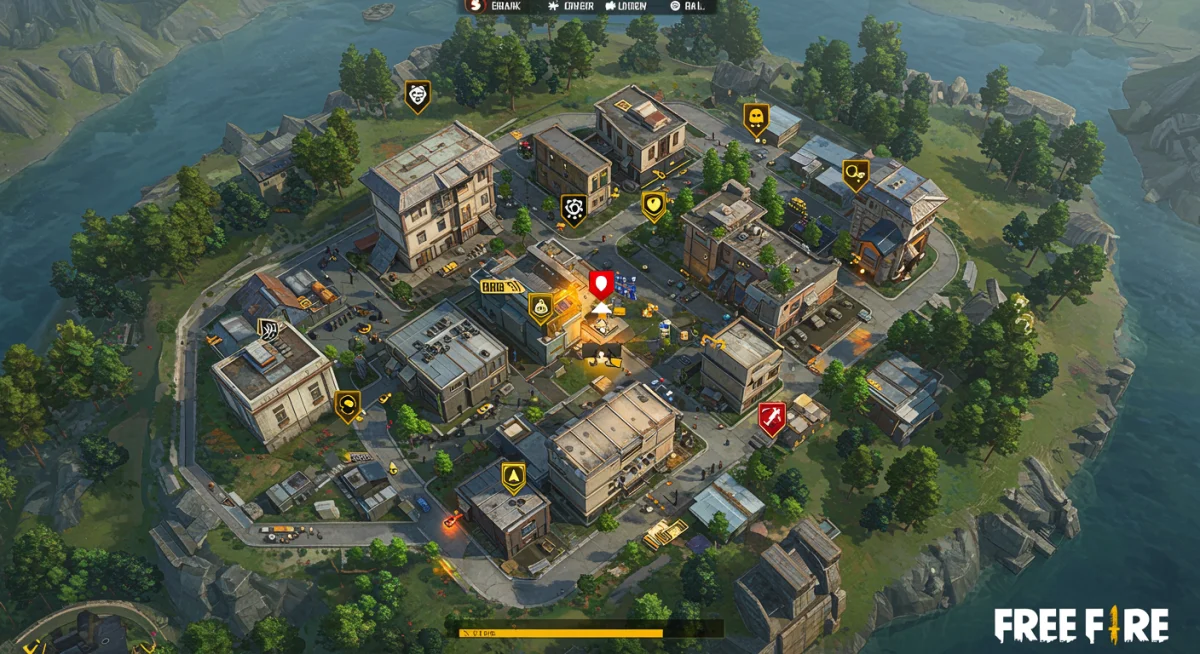
In essence, both Bermuda Remastered and Purgatory 2.0 demand a thorough understanding of their new layouts and the strategic implications of each change. Players who invest time in exploring these updated maps will be better prepared to adapt and dominate.
Mastering New Strategic Locations and Hot Drops
Every new map update introduces fresh strategic locations and potential hot drops, fundamentally altering where players choose to land and how they engage in early-game combat. Identifying these key areas and understanding their tactical advantages is crucial for gaining an early lead. A well-executed hot drop can set the tone for the entire match, providing superior loot and an early kill count.
This section focuses on pinpointing these new critical zones, analyzing their characteristics, and developing effective strategies for both aggressive landings and safer, more calculated approaches. Knowledge of these locations is a cornerstone of advanced gameplay in Free Fire Map Updates.
Identifying High-Value Drop Zones
High-value drop zones are typically areas with a higher concentration of rare loot, better weapons, and armor. With new map updates, these zones often shift, requiring players to re-learn optimal landing spots. For example, a newly added complex of buildings might become the new factory, drawing multiple squads looking for an early advantage. The risk is high, but the reward can be game-changing.
- New Urban Clusters: Look for dense groupings of buildings that offer extensive loot and multiple engagement angles.
- Elevated Positions: Areas with natural high ground provide excellent visibility and cover, ideal for sniping or controlling a wide area.
- Central Map Points: Locations near the center of the map often have good loot and allow for flexible rotations to subsequent safe zones.
Tactics for Hot Drops and Early Engagements
When dropping into a hot zone, speed and precision are paramount. Landing first, securing a weapon, and understanding your immediate surroundings can mean the difference between survival and early elimination. It’s not just about where you land, but how you land and what you do in the first 30 seconds.
For more cautious players, understanding hot drops is still vital. Knowing where aggressive teams are likely to land allows you to choose adjacent, safer spots, loot quickly, and then rotate to either engage the weakened survivors or avoid conflict altogether. This strategic awareness is a key differentiator between average and skilled players.
Ultimately, mastering new strategic locations and hot drops involves a combination of map knowledge, quick decision-making, and refined combat skills. Continuously experimenting with different landing spots and observing opponent behavior will lead to consistent improvement.
Adapting Your Loadout and Character Skills for New Environments
The introduction of new map elements and revised layouts often necessitates a re-evaluation of your preferred loadout and character skill combinations. What was once an optimal setup might become less effective in a different environment. For example, a map with more open fields might favor long-range weapons and characters with movement abilities, while a map dense with buildings could call for shotguns and characters skilled in close-quarters combat.
This section explores how to intelligently adapt your weapon choices, attachments, and character abilities to best suit the unique demands of the latest Free Fire Map Updates. It’s about making informed decisions that give you a tactical edge.
Optimizing Weapon Choices for Varied Terrain
Different map terrains demand different weapon types. A new map section featuring tight corridors and multiple entry points will make SMGs and shotguns incredibly potent. Conversely, large, open areas newly introduced will highlight the importance of assault rifles and sniper rifles. Understanding these nuances is critical.
- Close-Quarters (CQB) Dominance: For areas like redesigned factories or urban clusters, prioritize shotguns (e.g., M1887) and high-fire-rate SMGs (e.g., MP40).
- Mid-to-Long Range Control: In expansive zones or areas with elevated positions, assault rifles (e.g., SCAR, AK-47) and sniper rifles (e.g., AWM) are essential for maintaining distance and picking off opponents.
- Balanced Loadouts: A versatile approach often involves carrying one CQB weapon and one mid-to-long range weapon, allowing for flexibility in engagements.
Character Skills: The Ultimate Tactical Advantage
Character skills can significantly influence your effectiveness on new maps. For instance, a character like Kelly or Alok, with their speed-boosting abilities, can be invaluable for quickly traversing larger maps or escaping dangerous situations in newly designed areas. Characters like Chrono or K provide defensive capabilities that are crucial in unpredictable new hot zones.
Consider the meta of the new map. Is it more prone to aggressive pushes? Then defensive or healing abilities might be key. Does it have many open spaces? Mobility skills could be your best friend. Experimentation with different character combinations on the new layouts will reveal what truly works best for your playstyle.
In conclusion, a flexible approach to your loadout and character skills is paramount when facing new map updates. By aligning your gear and abilities with the environmental demands, you can significantly enhance your chances of survival and victory.
Advanced Rotation Strategies and Zone Awareness
Executing intelligent rotations and maintaining acute zone awareness are perennial pillars of Free Fire mastery, but they become even more critical with Free Fire Map Updates. New geographical features, altered safe zone behaviors, and revised chokepoints mean that old rotation patterns may no longer be optimal, or even safe. Players must constantly re-evaluate their movement strategies to stay ahead of the curve and outmaneuver opponents.
This section delves into advanced techniques for navigating updated maps, emphasizing how to predict safe zone shifts, utilize new terrain for cover, and execute strategic rotations that minimize risk while maximizing tactical advantage.
Predicting Safe Zone Behavior on New Maps
Safe zone shrinkage patterns can sometimes be subtly altered by new map additions. While the core mechanics remain, the presence of new landmarks or redesigned areas can influence where the zone pulls, creating new high-traffic areas or unexpected safe havens. Learning these new patterns is a matter of observation and experience.
Players should pay close attention to the first few zone pulls in a match, noting how they interact with the new map features. Are the zones favoring new urban areas? Or are they pushing players towards previously ignored open fields? This information is invaluable for planning future rotations.
Optimizing Rotations with New Terrain
New terrains offer both opportunities and threats. A newly introduced ridge line might provide excellent cover for a flank, but also become a dangerous chokepoint if not approached carefully. Similarly, new bodies of water or redesigned road networks can either facilitate rapid movement or create bottlenecks.
- Utilize New Cover: Identify and use newly added structures, hills, or dense foliage for protection during rotations.
- Avoid New Chokepoints: Be aware of areas where the new map layout forces players into narrow pathways, and plan alternative routes.
- Leverage Vehicles: On larger, updated maps, vehicles become even more crucial for fast and safe rotations, especially when covering long distances between new areas.
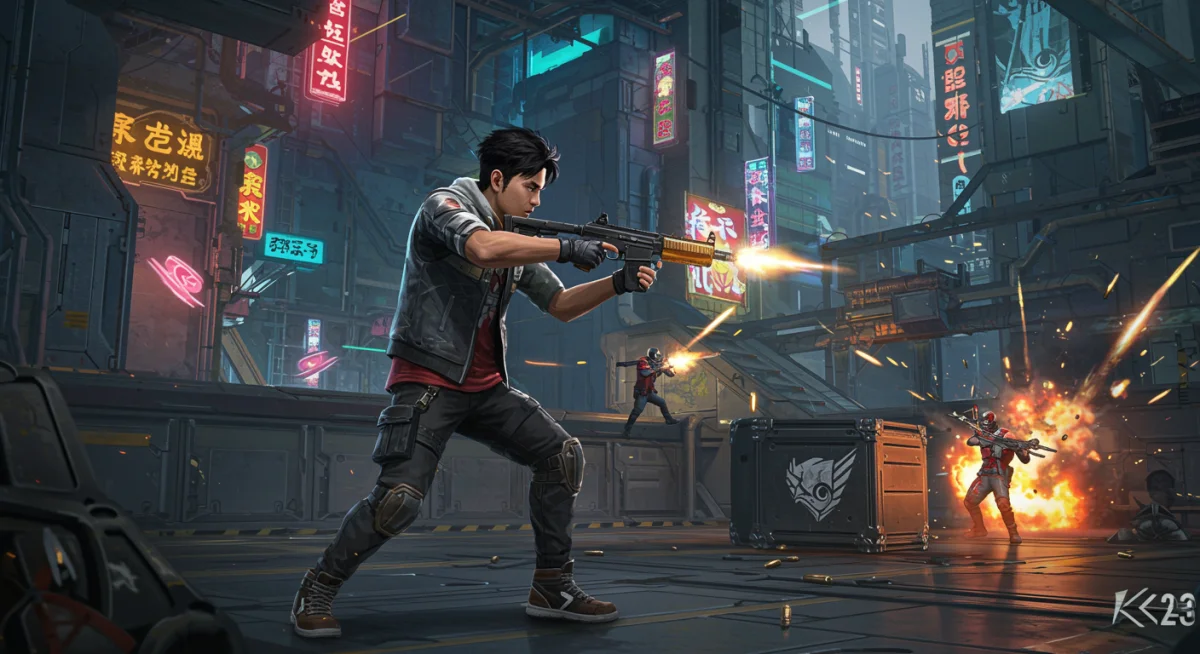
Ultimately, advanced rotation strategies on new maps require a blend of predictive analysis, quick decision-making, and a keen understanding of the newly shaped environment. Mastering these elements will allow players to consistently position themselves advantageously.
Team Coordination and Communication in Updated Environments
In Free Fire, individual skill is important, but team coordination and effective communication are often the deciding factors in securing victory, especially on maps that have recently undergone significant updates. New layouts can disrupt established team strategies, making clear and concise communication more vital than ever. Teams that can quickly adapt their callouts and tactical plans to the evolving environment will consistently outperform those who struggle.
This section emphasizes the importance of refined team play and communication strategies specifically tailored for navigating the latest Free Fire Map Updates. It’s about transforming individual efforts into a cohesive, dominant unit.
Adapting Callouts for New Locations
One of the biggest challenges with new maps is establishing common callouts for unfamiliar locations. What was once ‘Red House’ might now be ‘Abandoned Factory,’ or a new un-named structure needs a quick, identifiable designation. Teams should actively work on creating and memorizing new callouts for critical points of interest.
Before dropping, take a moment to discuss potential landing spots and key landmarks. During gameplay, be specific and descriptive when calling out enemy positions or loot. Instead of just ‘enemy,’ say ‘enemy on the new warehouse roof, west side.’ This precision is invaluable in fast-paced combat.
Executing Coordinated Pushes and Flanks
New map layouts can open up fresh opportunities for coordinated pushes and flanks. A newly added ridge might provide an ideal position for a sniper to cover a teammate’s push, or a redesigned building complex might offer multiple entry points for a multi-pronged attack. Teams need to be flexible and creative in exploiting these new tactical avenues.
Practice makes perfect. Regularly playing on the updated maps with your squad, experimenting with different approaches, and debriefing after each match will help solidify new strategies. Focus on:
- Synchronized Movements: Moving as a unit, or in coordinated pairs, to cover each other.
- Target Prioritization: Quickly identifying and focusing fire on key enemy threats.
- Utilizing Utilities: Combining grenades, smoke, and gloo walls effectively to control engagements.
In summary, successful team coordination on updated Free Fire maps hinges on clear communication, quick adaptation of callouts, and a willingness to explore and refine new tactical approaches together. Strong teamwork turns map changes into strategic advantages.
Practice and Continuous Learning: The Key to Map Mastery
The journey to mastering Free Fire Map Updates is not a one-time event; it’s a continuous process of practice, observation, and learning. The game is dynamic, with Garena frequently introducing new content and balancing changes. Relying solely on past knowledge will inevitably lead to stagnation. True mastery comes from an ongoing commitment to understanding the game’s evolving landscape and refining your skills accordingly.
This final section emphasizes the importance of consistent engagement with new content, strategic practice routines, and a mindset geared towards continuous improvement. It’s about turning every match, win or loss, into a valuable learning experience.
Effective Practice Routines for New Maps
Simply playing matches is a start, but deliberate practice is far more effective. Dedicate specific sessions to exploring new map areas without the pressure of a full-scale battle. Focus on learning the terrain, identifying potential cover, and memorizing loot spawns. This reconnaissance phase is crucial.
Once familiar with the layout, focus on specific combat scenarios. Practice landing in hot zones, engaging in close-quarters combat within new buildings, and executing rotations under pressure. Utilize the training grounds to test new weapon combinations or character abilities before taking them into a live match.
Analyzing Replays and Learning from Mistakes
One of the most underutilized tools for improvement is replay analysis. Watching back your own gameplay, especially matches where you performed poorly or made critical errors, can provide invaluable insights. Pay attention to:
- Poor Positioning: Did you get caught in the open due to a bad rotation?
- Suboptimal Engagements: Could you have approached a fight differently?
- Missed Opportunities: Were there strategic advantages on the new map you failed to exploit?
- Team Communication: Were callouts clear and timely, especially for new map features?
Learning from mistakes, both your own and those of others (by watching pro players), accelerates your adaptation process. The Free Fire community is vast, and there are many resources, from streamers to guides, that can offer fresh perspectives on how to dominate the latest map updates.
In conclusion, consistent practice, thorough map exploration, and a commitment to analyzing your gameplay are the cornerstones of achieving and maintaining mastery over Free Fire’s ever-changing battlegrounds. Embrace the learning process, and you’ll always be one step ahead.
| Key Aspect | Brief Description |
|---|---|
| Map Familiarity | Explore new zones, identify cover, and understand terrain changes to adapt movement and combat strategies. |
| Loadout Adaptation | Adjust weapon choices and character skills to suit the unique demands of updated environments, favoring CQB or long-range as needed. |
| Rotation Strategies | Develop new rotation paths, predict safe zone shifts, and utilize new terrain to avoid chokepoints and gain tactical advantages. |
| Team Communication | Establish clear callouts for new locations and coordinate pushes effectively to leverage team strengths in updated battlegrounds. |
Frequently Asked Questions About Free Fire Map Updates
Garena typically releases major map updates alongside new seasons or significant game patches, which usually occur every few months. These updates often introduce new areas, redesign existing locations, or alter environmental features to keep gameplay fresh and engaging for players.
The most effective way to learn a new map is through dedicated exploration. Drop into less contested areas first to familiarize yourself with the layout, cover, and loot spawns. Practice different rotation paths and observe how the safe zone shrinks in relation to new landmarks. Watching gameplay videos can also accelerate your learning.
Absolutely. New map designs can create environments that favor specific weapon types. For instance, a map with more enclosed spaces might make shotguns and SMGs more dominant, while open areas could increase the utility of assault rifles and sniper rifles. Adapting your loadout is key.
Clear communication is crucial. Teams should establish new, concise callouts for updated locations. Practice precise enemy positioning descriptions and coordinate movements. Regularly debriefing after matches to discuss effective strategies and areas for improvement on the new map will significantly enhance teamwork.
While many major map updates, like Bermuda Remastered, tend to be permanent additions or significant overhauls, Garena occasionally introduces temporary map alterations or limited-time events that modify existing maps. Always check official announcements for the longevity of specific map changes.
Conclusion
Mastering the newest Free Fire Map Updates is an ongoing journey that demands adaptability, strategic thinking, and continuous learning. By understanding the profound impact of these changes on gameplay, analyzing new strategic locations, optimizing your loadout, refining rotation strategies, and fostering strong team communication, you can consistently stay ahead of the competition. Embrace the challenge of the evolving battlegrounds, dedicate time to practice and exploration, and you’ll find yourself not just surviving, but dominating every match in Free Fire.
